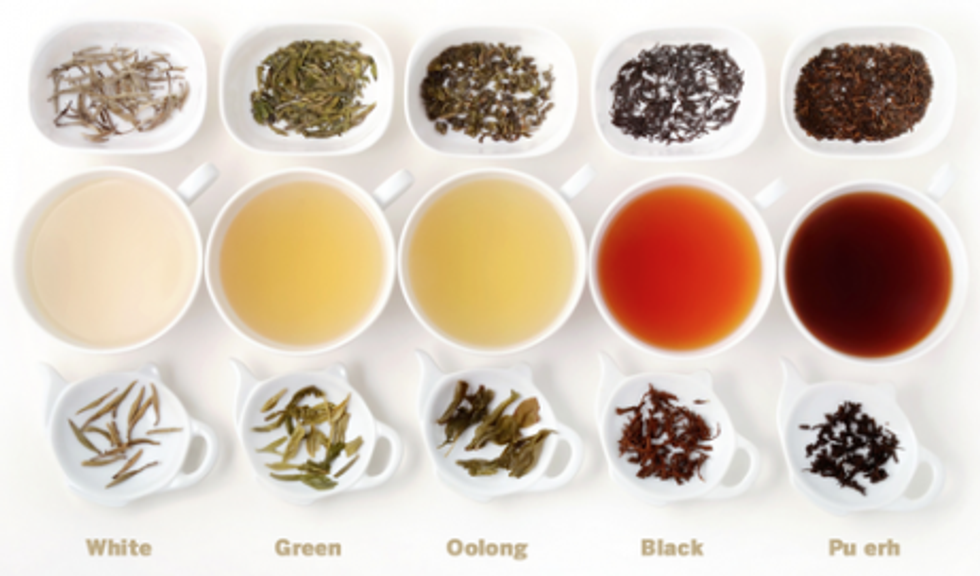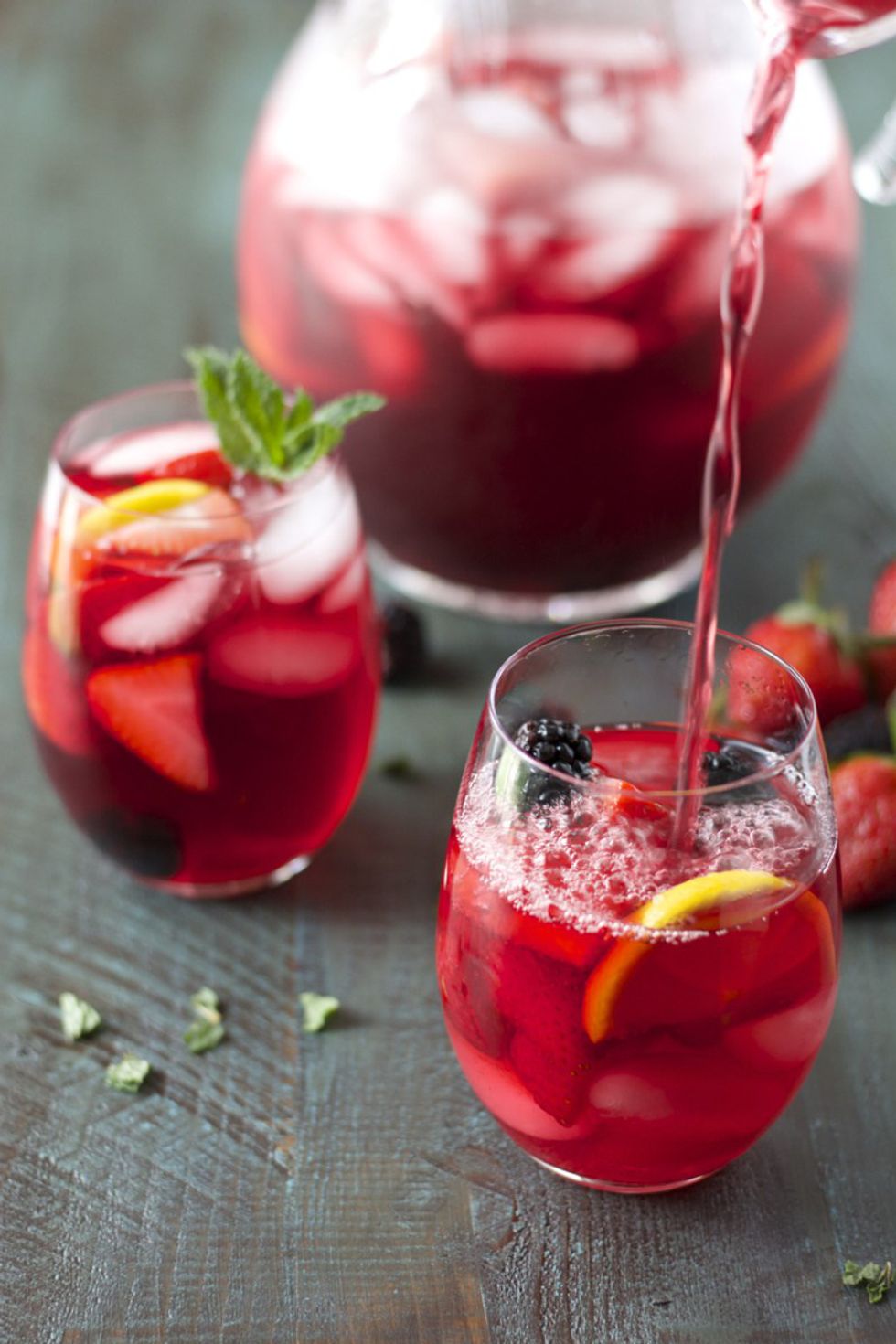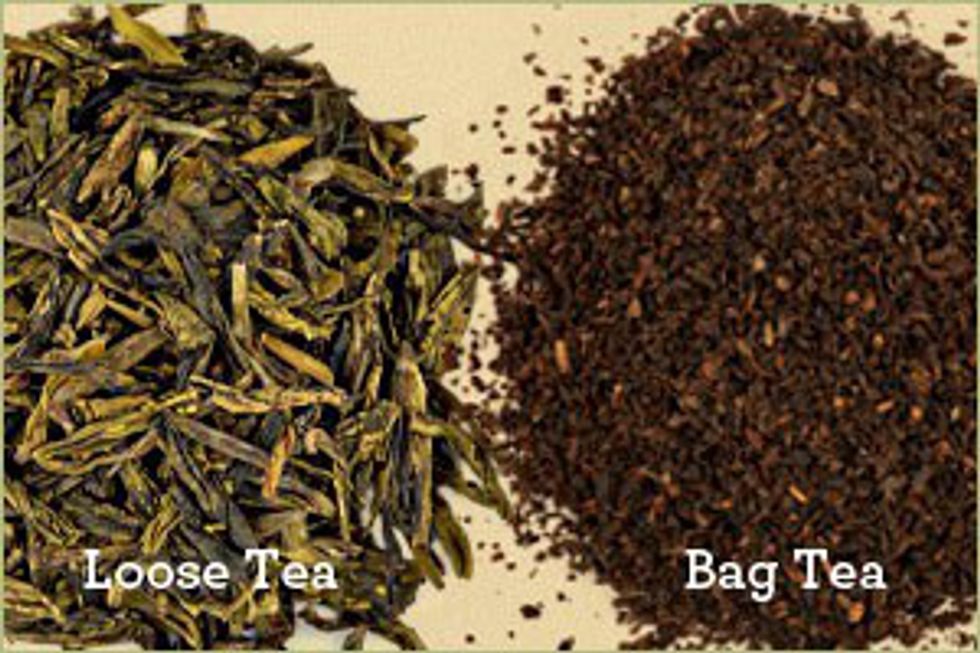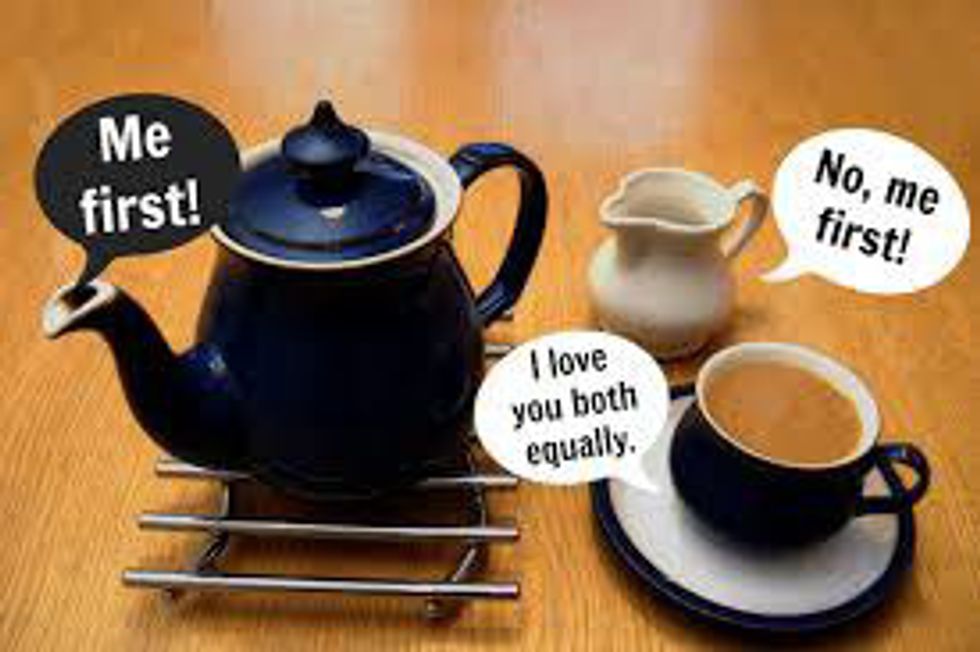There's coffee for our American rebels, but if you want to be a sophisticated old-timer, you gotta drink some tea. Just kidding, I love both coffee and tea. Take a break from your stressful life, settle down with a cup of tea, and read these four must know facts about the amazing drink.
1. Black tea, oolong tea, green tea, and white tea are all made from the same leaf.
Credit here
yeah, you read that right, it all comes from the same leaf! The difference is in the processing (roasting, cutting, and rolling of the leaves), growing conditions, and geography.
Black tea leaves stay on the plant longer, allowing oxidation to occur, during which water evaporates out of the leaf and the leaf absorbs more oxygen from the air. The characteristic dark brown and black color comes from the full oxidation of the leaf. Black teas are normally described as having a more robust and pronounced flavor than other teas, and has a relatively high caffeine content compared to other teas (50-65% of coffee, depending on the type and brewing technique), which is why English breakfast teas are black teas.
Oolong tea is also oxidized, but only partially. These teas have a caffeine content between that of green teas and black teas. The flavor of oolong is typically described as less robust than black tea or subtle, like green tea, but with its own extremely fragrant and intriguing tones. Oolong is often compared to the taste and aroma of fresh flowers or fresh fruit. The flavor is quite amazing.
In green tea, the oxidation process after picking is stopped very quickly by firing (rapidly heating) the leaves. When brewed at lower temperatures and for less time, green teas tend to have less caffeine (10-30% of coffee). Green tea tends to produce more subtle flavors with many undertones and accents.
White teas are the most delicate of all teas. They are described as having subtlety, complexity, and natural sweetness. They are generally hand-processed using the youngest shoots of the tea plant, with no oxidation. The caffeine level is less than black tea but more than green tea.
2. If it's a "fruit tea", chances are, it's actually an infusion
Credit here
According to Wikipedia, "Tea is an aromatic beverage commonly prepared by pouring hot or boiling water over cured leaves of the Camellia sinensis, an evergreen shrub native to Asia". If the drink is, for example, passionfruit tea, it's probably made with a black tea with added flavoring. If the tea is steeped from fruit or plants other than the Camellia sinensis, such as orange peels or chrysanthemum, it's more like an infusion, even though most people, me included, still call it tea.
3. Tea bags vs loose leaf tea
Credit: here
The leaves used in most tea bags are actually the "dust and fannings" from broken tea leaves. They are usually cheaper, since their quality is compromised. Finely broken up leaves will lose most of their essential oils and aroma. When steeped, they release more tannins than whole leaves, resulting in more bitter astringent brews.
However, they are much more convenient when making single serving teas, and there is no risk of soggy stray leaves ending up in your mouth. So if you have the time and are willing to put in the effort, try a full leaf tea. There will be more aroma and flavor compared to a tea bag. But if you are busy or just don't really want to put in the work (understandable), brewing tea from a tea bag is still pretty good.
4. If you put milk in tea, is it tea before milk or tea after milk?
Credit: here
*Science* says tea after milk, so that the milk can heat evenly and not denature/ form clumps. However, this rule only applies if you are pouring the tea from a teapot into a cup.
From the wonderfully articulate people at fortnumandmason.com, "This thorny question has divided tea drinkers for quite some time. Putting the milk in last was considered to be the ‘correct’ thing to do in refined social circles, but the reason for this is often forgotten. In the early days of tea-drinking, poor-quality cups were inclined to crack when hot tea was poured into them, and putting the milk in first helped to prevent this. When finer and stronger materials came into use, this was no longer necessary – so putting the milk in last became a way of showing that one had the finest china on one’s table. Evelyn Waugh once recorded a friend using the phrase ‘rather milk-in-first’ to refer to a lower-class person, and the habit became a social divider that had little to do with the taste of the tea.
Having said that, there is a good reason for adding the milk last – if you are drinking an unfamiliar tea, it is easier to judge the correct amount of milk to add once you have seen the strength and colour of the tea. On the other hand, putting the milk in first means that the fat in the milk emulsifies in a different way when the tea is poured, which does change the flavour of the tea, giving it a more even, creamier flavour. It also cools the tea slightly to a more acceptable drinking temperature. So, now that the days when one’s social position was judged by this sort of thing are long gone, you may pour your tea however you choose."























